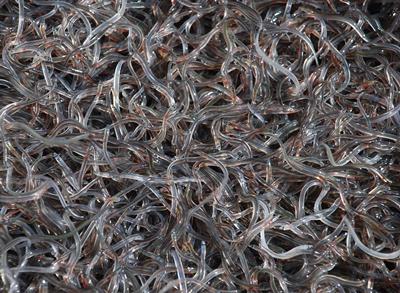Scientists model eel behaviour to help conserve critically endangered species

Researchers have built a predictive model for juvenile eel migration up European estuaries that will help urgent conservation efforts.
The interdisciplinary project, led by ecological engineer Professor Paul Kemp from the University of Southampton, simulates how eels swim in a 3D flow model based on theoretical behaviours substantiated with eel trap data.
Scientists from Southampton, HR Wallingford, the University of Nottingham and ZSL (Zoological Society of London) have published their findings in the journal Ecological Modelling.
European eels start their lives at an unknown location in the Sargasso Sea, near Bermuda, and drift across the Atlantic on oceanic currents. The fish navigate up European rivers, including the Thames, to feed and grow for up to 30 years before returning to their spawning grounds.
Eel numbers have suffered a sharp decline of around 95 percent since the 1980s and the creatures are now included Red List of Threatened Species by the International Union for the Conservation of Nature (IUCN).
This dramatic reduction is understood to be caused by a number of factors, including hazards and barriers such as weirs, sluice gates and dams, that prevent the eels from migrating to important freshwater habitats.
The new science can help conservationists and engineers design measures to support the recovery of the species and support the selection of eel-friendly sites for new developments and low-impact infrastructure.
Professor Kemp is the principal investigator on the Engineering and Physical Sciences Research Council (EPSRC) funded project Vaccinating the Nexus under which the research was conducted.
He says: “It is really great that this interdisciplinary research, which involves engineers, mathematicians and biologists, is providing the information needed to help protect this species of high cultural and ecological value.”